Answers to the most common questions I get about seed cycling, including how it works, who it works best for, research, and seed prep.
I first wrote about how seed cycling helped me get my cycle back after five years of amenorrhea over three years ago now. Since then, I've used seed cycling with many of my clients as a gentle push toward balanced hormones.
I get a TON of questions on my original post about seed cycling, which shares the seed cycling protocol I used and my personal story. However, it doesn't give answers to all the questions you might have about seed cycling, so I thought I'd write another post attempting to answer all the commonly asked questions. Let me know if you have any more, and I'll do my best to answer them!
What is Seed Cycling?
Seed cycling is a method of eating specific seeds at different times of the month to help balance female hormones and promote fertility.
How Does Seed Cycling Work?
A woman's cycle is composed of two phases. The first phase is the follicular phase, from the first day of a woman's period to ovulation (typically 14 days, but not always.) This phase is estrogen dominant as the body prepares to release an egg.
The second phase is the luteal phase, from ovulation until her period starts (typically 14 days.) This phase of a woman's cycle is progesterone dominant, as her body prepares to nurture a potential offspring.
Seed cycling seeks to provide estrogen and progesterone supporting nutrients in their respective phases in hopes to help boost production when in each is needed.
What Are The Benefits Of Seed Cycling?
There are many benefits to seed cycling. The seeds used are incredibly nutritious, rich in vitamins, minerals, antioxidants, fiber, protein, and healthy fats. Also, for some, they may see more regular cycles, improved fertility, or lessening menopause symptoms.
What are the Side Effects of Seed Cycling?
I think the best part of seed cycling is there is a minimal downside. The consumption of all of these seeds is very safe. The seeds used are packed full of nutrients, so even if it doesn't work, the worst that happens is you get extra nutrients. That's a win!
How Long Does It Take For Seed Cycling To Start Working?
You may notice a benefit in as little as 30 days, but it can take up to 90 days for you to see any difference. If fertility is your goal, remember it can take three months for an egg to fully mature, so you want to give it at least 3-6 months.
What Seeds Are Used In Seed Cycling?
Different protocols use different seeds. The seeds most commonly involved are flax, chia, hemp, pumpkin, sunflower, and sesame seeds. I shared the protocol I used in this post.
Do the Seeds Have To Be Ground For Seed Cycling?
Most sources recommend yes, all seeds should be ground before consumption when seed cycling. Personally, I only ground the flax seeds and sesame seeds, because the hard outer shells aren't digestible to humans unless they are ground. I used a coffee grinder to grind my seeds.
Other seeds that are often used in seed cycling can be just chewed like hemp, sunflower, and pumpkin. Chia seeds are too small to grind anyways. I don't use those that often.
Do The Seeds Have To Be Raw For Seed Cycling?
Again, most sources recommend raw seeds, likely because roasting could potentially destroy the delicate, healthy fats they contain. This is why you should also store all your seeds in the fridge or freezer, especially after they've been ground.
Again, I didn't follow this rule exactly. I often ate Trader Joe's sunflower butter in place of raw sunflower seeds as well as roasted salted pepitas in place of pumpkin seeds. I did eat my flax and hemp seeds ground and raw, though.
Is There Any Research to Support Seed Cycling?
To my knowledge, there has not been any research done on seed cycling. The idea of seed cycling is like the "bro-science" of the female world. It is an idea based on previous research, including the seeds used, but it hasn't been tested in a lab.
The idea is the lignans in flax and sesame seeds (in their respective cycle phases) have pro and anti-estrogenic effects depending on the levels in which they are consumed. It's also believed that the lignans can bind to unwanted forms of estrogen to improve levels of estradiol, the wanted type of estrogen. The most well-researched seed when it comes to fertility and hormone balance is flaxseed.
There are very small studies (like 8-10 people in each study) linking ground flax seed intake to improved cycle regularity, increased likelihood of ovulation, lengthened luteal phase, and reduced breast pain. For that reason, I have in the past recommended that some clients not follow the whole protocol, but instead, consume the 2 tablespoon of ground flax in the first half of their cycle and see if that makes a difference.
Pumpkin seeds are incredibly rich in zinc, and sunflower seeds are rich in Vitamin E, both nutrients needed to stimulate the production of progesterone. Remember, nutrients are best absorbed from food, so this is why seed cycling might be useful over just taking a multi-vitamin. Again, research in this area is small and limited.
Do I Need To Take The Supplements with Seed Cycling?
Three supplements often recommended accompanying seed cycling are:
- Multi-vitamin (usually a prenatal for fertility or amenorrhea)
- Fish Oil
- GLA
Multi-Vitamin
If you were planning to become pregnant and were my client, I'd tell you the Multi-vitamin is necessary. For some nutrients, the most critical time to get enough is before you are pregnant.
If you are recovering from amenorrhea, your body needs to feel nurtured in any way possible, so again, I'd say yes. Other situations are a case by case basis, but a good quality Multi is something I typically recommend everyone take. Unless you eat perfectly, 100% of the time.
Fish Oil
The point of fish oil supplementation is to get enough omega-three fatty acids. Research shows that an imbalance of types of fatty acids is associated with dysmenorrhea, fertility issues, and improve pregnancy outcomes. This is the basis behind consuming omega-three rich seeds.
The protocol I did and I often recommend starts with a high level of fish oil supplementation and progresses down to a lower level combined with GLA in the second phase. It's my personal belief that everyone should take a fish oil supplement. (Please talk to your doctor though, Fish Oil thins the blood and interacts with certain medications. More on fish oil and omega 3 fatty acids here.)
Our diets are incredibly high in inflammatory omega-six fatty acids. The typical ratio of omega 3 to omega 6 in the diet is 15 to 1, but, what's recommended is 4 to 1. In order, it improves that ratio supplementation is necessary. Make sure you get a high-quality brand that has at least 500mg of EPA & DHA per serving. Store fish oil in the fridge or freezer as it can become rancid quickly.
GLA
GLA is a type of omega-six fatty acids, which are typically inflammatory, but like everything, there is always an exception to the rule. GLA is anti-inflammatory and works primarily on the reproductive system. While it can be supportive of hormone health and PMS symptoms (research is mixed or inconclusive at best), it actually should not be taken if you are trying to conceive.
I notice a huge difference in my cramps during my period and PMS symptoms on the months I don't take GLA in the second half of my cycle. So, I'd say if you are trying seed cycling, it's worth a shot unless you are trying to get pregnant, then skip it.
Will Seed Cycling Work On Birth Control?
No. Seed cycling will not help balance hormones if you are on birth control. On birth control, your body is being dictated by artificial hormones, and nothing you do will change that, besides to stop taking the birth control. If that's something you chose to do, I do recommend starting seed cycling the last month you take it and continuing for six months.
Doctors say it can take six months to a year for your hormones to regulate post-birth control depending on the method and your response. It took mine FIVE years, which is not normal. Seek out medical attention to rule out more serious conditions if your cycle does not return within six months.
Does Seed Cycling Work For Fertility?
I think seed cycling is probably the most beneficial in the realm of fertility. I've seen it work too many times not to believe it doesn't support optimal hormone health. In the case of fertility, it's providing a lot of extra healthy fats and vitamin-rich seeds, which is optimal for fertility.
Is there research to support this idea? Not really, it's minimal. Again, the extra nutrients can only help, though!
Does Seed Cycling Work While Breastfeeding?

If you start menstruating while breastfeeding, seed cycling may help to regulate your hormones. If you are exclusively breastfeeding and have not had a cycle, I wouldn't think seed cycling would make a big difference.
You probably want all those hormones to keep working in favor of breastfeeding as the priority anyways. Personally, I experienced all hell breaking loose hormonally when I weaned my son at one-year-old.
I only tried seed cycling one month, when I had already had six periods in like eight weeks. So, seed cycling didn't help me regulate my periods then, but I only did it one month. If I could go back, I would have begun seed cycling the month before (or even 2-3 months before I planned to wean) we weaned.
Does Seed Cycling Work For Amenorrhea?
Amenorrhea is a tricky beast. It's unique for each woman, and no one set formula will trigger her hormones to start cycling again. Common factors include nutrient intake, calories, exercise, stress levels, medications, auto-immune conditions, and other factors. It helped me but in combination with reduced stress levels, time, and optimal nutrient intake.
Most naturopaths will recommend you seed cycling following the moon calendar while you don't have a cycle of your own to sync. You can find more about that in my original post on seed cycling.
Does Seed Cycling Work For Irregularity or PCOS?
Yes! It can help promote more timely and regular ovulation, thereby regulating your cycles.
Does Seed Cycling Work For Endometriosis?
It definitely won't hurt you to try it, but it wouldn't be my first recommendation. I would, however, recommend the supplements associated with seed cycling.
Does Seed Cycling Work for Menopause?
A ton of people say it does, but in my practice, I've never significantly seen it help anyone I recommended it to who is going through menopause. It's my opinion that using seed cycling in pre-menopause helps support a natural biological process. In menopause, you are working against a natural biological process. I no longer recommend it for menopause-related symptoms. That being said, I have seen it help with clients who are in peri-menopause.
RELATED POSTS ON HORMONE BALANCING:
- Recovering from 5 Years of Amenorrhea
- Post-Pill Amenorrhea Update (4 months later)
- Seed Cycling for amenorrhea, irregular cycles, and hormone balance
- How to Make Your Hormones Work For You (What to eat/how to train)
- Why Your Hormones Need Carbs
- Iron Foods, Functions, and Facts (related)
- What No One Told Me About Weaning Breastfeeding
- My friend Ashley wrote an ebook called Fit & Fertile (affiliate link)about her experience with Amenorrhea as a Group Fitness Instructor and what she did to get pregnant naturally. Her experience was different t n mine, but similar in some ways as well. Either way, it was a comforting read.


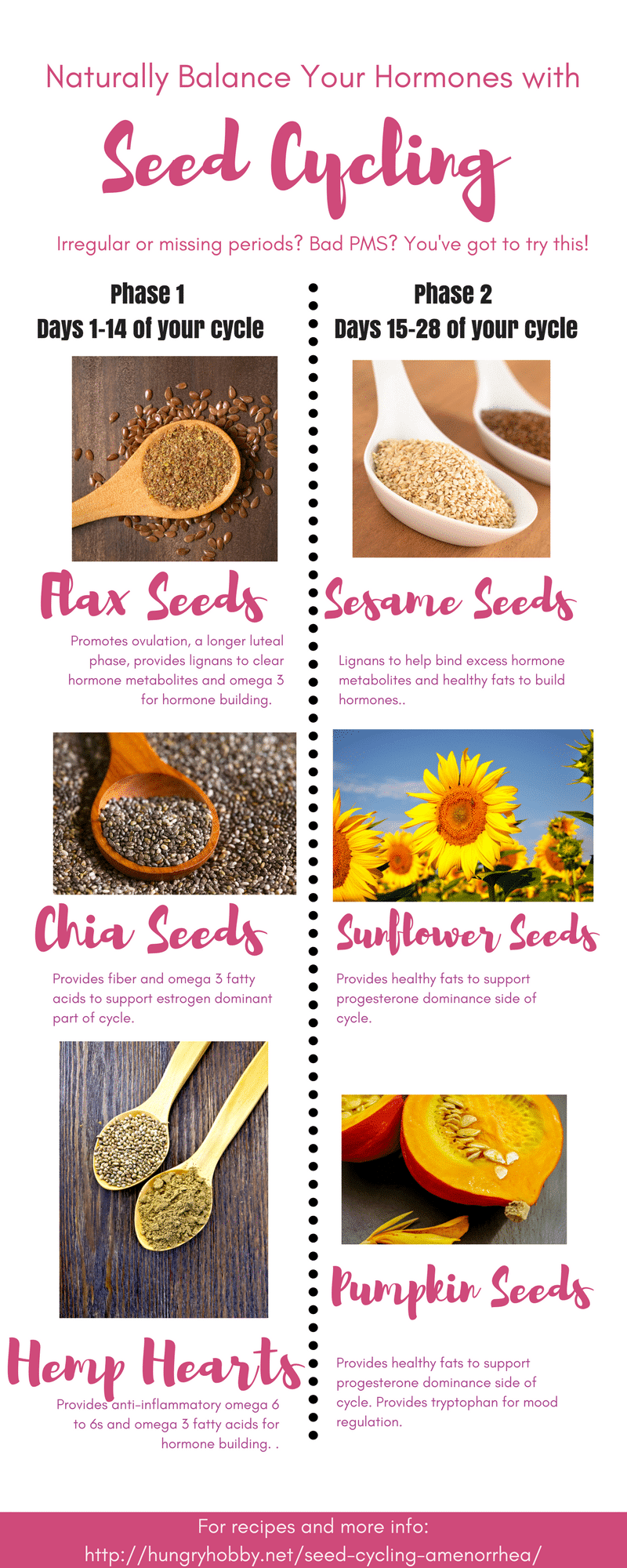


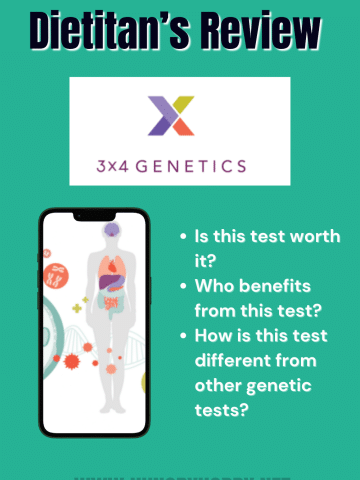
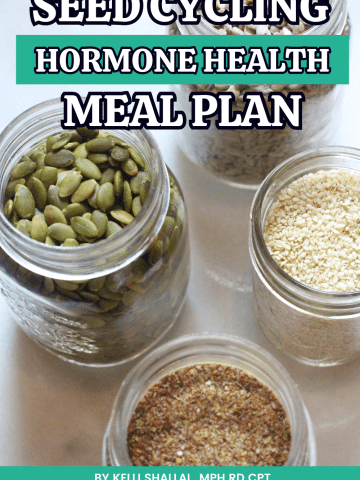
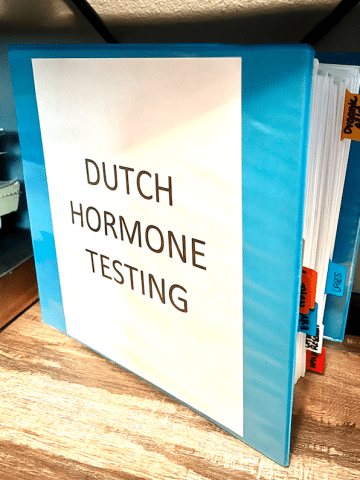
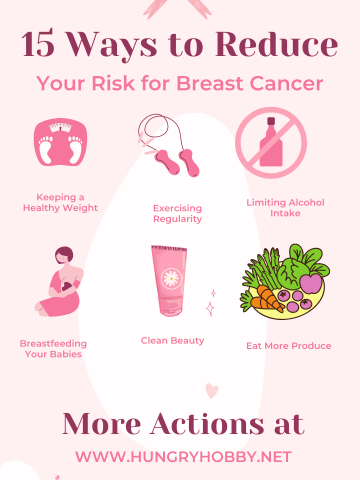
Laila Marafie says
Question .... which no one seems to write about when it comes to seed cycling..
My cycle just shifted to 38 days, from a regular 27-29
Should I still switch back to flax/pumpkin what would be day one? Or carry on with sesame and sunflower until my period comes each month. I feel rotten in that ‘limbo’ week. Low mood, sluggish etc.
Kelli Shallal MPH RD says
Hi Laila, It sounds like your following a different protocol then I typically work with. In mine, it's flax/hemp and then pumpkin/sunflower or sesame. This is a good question though. If you were my client, we would work to determine why you are ovulating so late (that's how your period gets delayed, you likely ovulated on day 24 could be stress from the quarantine situation for sure) and where the "moon cycles" are at compared to your normal cycle. Day one, though, is usually the first day of your period so you would stay on the second half of the protocol to help support progesterone production. If you are usually regular my guess is that your late because ovulation was delayed due to the stress of what's going on in the world.
Suzy says
Hi after starting 2 days of seed cycling, l now have breast pain on one side, over my nipple. Can flaxseeds cause this? I m not estrogen dominant. Thank you.
Kelli Shallal MPH RD says
Hi Suzy, I think it’s highly unlikely, but I’d refer to your doctor on this one!
Eda says
Hi. I m on my 3rd day of taking flax seed however it gave me a painful breast on my side. I m menopausal by the way and not estrogen dominant. Do you think flax seed might caused my stinging nipple pain and also l heard some women saying that it gave them bigger breasts sth definitely not l want. Can that be true? Thank you.
Kelli Shallal MPH RD says
Hi Eda, I think it's highly unlikely, but I'd refer to your doctor on this one!
Charlotte says
Thank you for sharing! I think it's interesting your protocol uses pumpkin seeds in the second phase and not in the first phase, which makes your protocol unique compared to all my other research. I'm curious to try it.
However, I have a funky question. I started doing seed cycling and loved being synced up to the moon, but I found I had irregular bleeding between my menstruations as a consequence! Is that normal? As soon as I stop the seeds the bleeding stops. Very cross, do you have any ideas? Doctors I've visited had no answers.
Kelli Shallal MPH RD says
Irregular bleeding can be the cause of many things! It's something I can only answer on an one on one basis!
Charlotte says
Let me rephrase - can you think of a reason why seed cycling would trigger irregular bleeding? Or have you heard of seed cycling causing irregular bleeding?